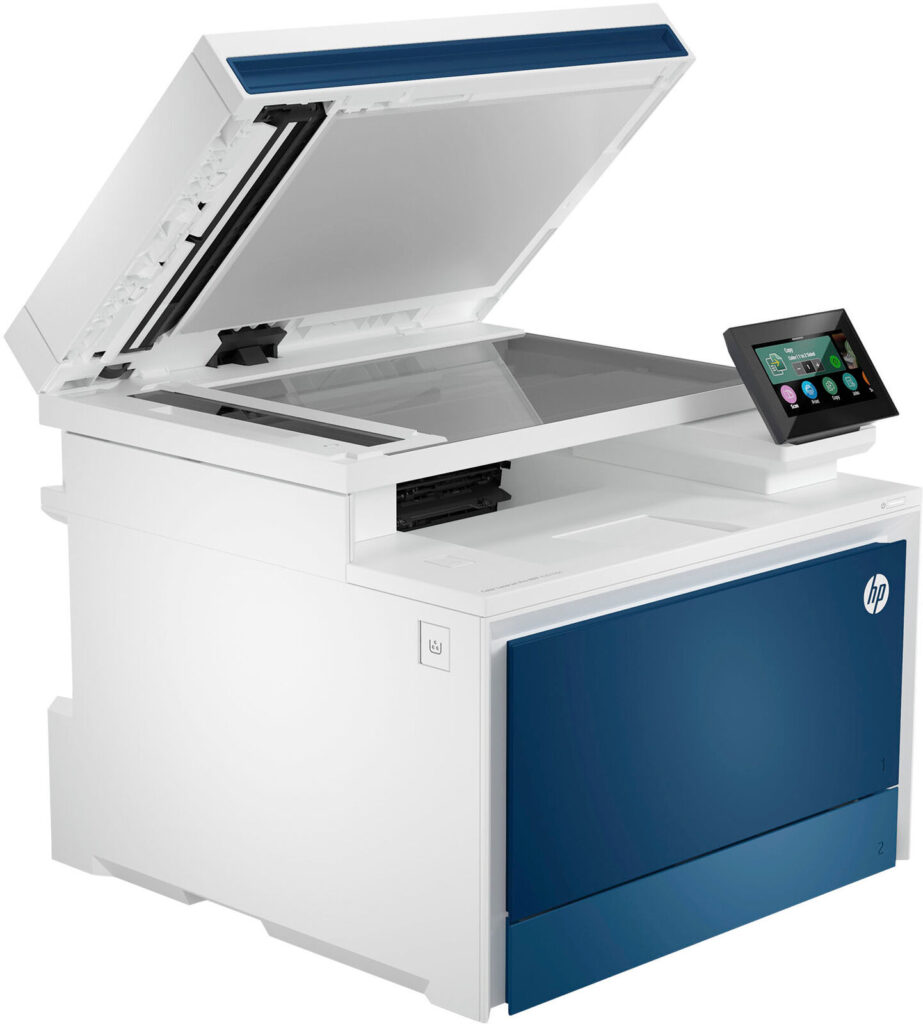Choosing The Best Printer Technology: Inkjet vs. Laser vs. LED.
Introduction to Best Printer Technology
In the modern era, the need for efficient and versatile printing solutions is paramount. Whether it’s a home printer for personal use or a high-end laser printer for professional tasks, the technology behind printers has evolved significantly. From traditional inkjet printers to advanced all-in-one printers, the market offers a wide range of options. The choice between ink and toner cartridge, monochrome laser or color, and other factors can make selecting the best printer a complex task. This article aims to demystify these technologies and guide you in making an informed decision.
Historical Background of Printers
The history of printers dates back to the invention of the first computer printer by Charles Babbage in the 19th century. However, the real breakthrough came with the introduction of inkjet and laser printers in the late 20th century. HP sold the first inkjet printer in 1988, revolutionizing the industry. On the other hand, laser printers made their mark with Xerox’s commercial machine in 1973. The evolution from monochrome laser printers to color, and from standalone devices to all-in-one printers, has shaped the way we print today.
Current Trends in Printer Technologies
Today’s printing landscape is marked by innovation and customization. The rise of ink tank systems, eco-friendly solutions, and smart home office printers reflects the current trends. Photo printers have become more accessible, allowing high-quality image printing at home. LED technology is also emerging, offering a faster and more reliable option. Moreover, the integration of AI and cloud connectivity in inkjet and laser printers is enhancing user experience. The focus is shifting towards sustainability, efficiency, and personalization, making it an exciting time for both consumers and businesses.
The purpose of this article is to provide a comprehensive guide to choosing between different printer technologies, including inkjet printer, laser printer, and LED. With a plethora of options available, selecting the best printer for your needs can be overwhelming. Whether you’re looking for a home printer, a photo printer, or a robust all-in-one printer for your home office, understanding the underlying technology, ink or toner cartridge system, and other factors is crucial.
This article will explore the pros and cons, historical context, current trends, and practical considerations to help you make an informed decision.
Introduction to Inkjet Printers
Inkjet printers have become a household name, offering versatile printing solutions for both personal and professional use. These printers are known for their ability to produce high-quality prints, especially when it comes to photographs and images. The inkjet printer technology is based on using liquid ink that is sprayed onto the paper through tiny nozzles. This technology has evolved over time, leading to various models, including the inkjet all-in-one printers that combine printing, scanning, and copying functions. Whether you are buying a printer for home use or looking for a business printer, inkjet options are often considered for their quality and flexibility.
How Inkjet Printers Work
Understanding how inkjet printers work is essential when deciding between an inkjet printer and other types. Inkjet printers use small nozzles to spray liquid ink onto the paper. The ink is stored in cartridges, and the print head moves back and forth, depositing ink in the desired pattern. Here’s a detailed explanation:
- Nozzles and Ink Cartridges: Inkjet printers use cartridges filled with liquid ink. The nozzles in the print head control the flow of ink, creating precise images and text.
- Printing Process: The printer receives the data from the computer and translates it into a series of dots. The nozzles then spray the ink, forming these dots on the paper.
- Color Printing: Most inkjet printers offer color printing by combining different ink colors. Some advanced models provide additional color cartridges for an extended color range.
- Paper Handling: The paper is fed through rollers, ensuring proper alignment and smooth printing.
This technology allows for detailed and vibrant prints, making inkjet printing a preferred choice for many users.
Pros and Cons of Inkjet Printers
When evaluating inkjet vs laser or other printer technologies, it’s crucial to understand the pros and cons of inkjet printers:
Quality of Prints:
- Pros: Known for exceptional quality, especially in photo printing. The liquid ink provides smooth transitions and rich colors.
- Cons: The quality might vary between different models and paper types.
Cost:
- Pros: Generally affordable to purchase, making them a popular choice for home use.
- Cons: The ink costs can be high, especially for branded cartridges. Inkjet printers tend to consume ink even during maintenance.
Speed:
- Pros: Suitable for moderate printing needs, with decent speed for home and small business use.
- Cons: Generally slower than laser models, especially for high-volume printing.
Maintenance:
- Pros: Maintenance is usually straightforward, with easy cartridge replacement.
- Cons: Prone to nozzle clogging if not used regularly, leading to additional maintenance.
Understanding these factors can guide you in choosing the best inkjet model for your needs.
Inkjet Printers for Home and Business
Inkjet printers are versatile, catering to both home and small office needs. For home use, they offer the convenience of printing photos, documents, and even creative projects. Many inkjet printers come with user-friendly features, wireless connectivity, and compact designs.
For businesses, inkjet printers provide quality prints for presentations, marketing materials, and more. The best all-in-one printers in the inkjet category offer scanning and copying functions, adding to their utility. Some business printers also include advanced security features and network connectivity.
Whether you are working from home or in a corporate environment, inkjet printers offer a range of options to suit different requirements.
Cartridge-Free Inkjet Printers
The traditional cartridge system in inkjet printers has evolved, giving way to cartridge-free or ink tank models. These printers come with refillable ink tanks, reducing the overall ink costs and offering a more eco-friendly solution.
- Cost-Effective: Lower cost per page compared to traditional cartridges.
- Eco-Friendly: Reduces cartridge waste, contributing to environmental sustainability.
- Convenience: Allows for bulk ink refilling, minimizing the frequency of replacements.
- Quality: Maintains the quality of prints, making it suitable for both home and business printers.
Cartridge-free inkjet printers are gaining popularity, especially among users looking for a cost-effective and environmentally friendly option.
Case Study: HP’s Inkjet Printers
HP has been a pioneer in the printer market, offering some of the best inkjet models. Their range includes everything from basic home printers to advanced all-in-one printers for businesses.
- HP Envy Series: Known for sleek designs and quality prints, suitable for home use.
- HP OfficeJet Pro: Offers professional-quality prints with features tailored for small businesses.
- HP Ink Tank Series: Provides cartridge-free printing with high-capacity ink tanks.
HP’s commitment to innovation and quality has made them a preferred choice for many users. Their inkjet printers cater to various needs, ensuring that whether you are looking for the best cheap option or a high-end model, HP has something to offer.
Introduction to Laser Printers
Laser printers have become synonymous with efficiency and speed in the printing world. Unlike inkjet printers, which use liquid ink, laser printers use a toner cartridge filled with powder. This technology is often preferred in office environments where high-volume printing is required. Laser printers offer sharp text prints and are available in both monochrome laser and color laser variants. Whether you’re looking for a single-function laser printer or a laser all-in-one model, understanding the basics of how these printers work can guide you in choosing the right printer for your needs.
How Laser Printers Work
The working mechanism of laser printers is quite different from inkjet printers. Here’s how they function:
- Toner Cartridge: Unlike inkjet printers that use liquid ink, laser printers use toner, a powdered substance.
- Laser Technology: A laser beam is used to create an electrostatic image on a drum. The toner sticks to this image.
- Transferring Image: The image is then transferred onto the paper by rolling it over the drum.
- Fusing: A heated roller fuses the toner to the paper, creating a permanent print.
- Cleaning: After printing, excess toner is cleaned off, and the drum is prepared for the next print.
This process is highly efficient, allowing laser printers to achieve fast printing speeds.
Pros and Cons of Laser Printers
Laser printers have their own set of advantages and disadvantages:
Quality of Prints:
- Pros: Excellent text quality, sharp and clear. Suitable for documents and professional reports.
- Cons: May not be the best photo printer option as they can lack in color vibrancy compared to inkjets.
Cost:
- Pros: Lower cost per page, especially for monochrome laser printer models.
- Cons: Initial purchase price can be higher, and color laser models can be expensive.
Speed:
- Pros: Known for high-speed printing, making them ideal for office use.
- Cons: Speed may vary based on the type of printer and model.
Maintenance:
- Pros: Generally low maintenance, since laser printers use a toner cartridge that lasts longer.
- Cons: Replacing a laser printer toner can be more expensive than ink cartridges.
Understanding these aspects can help in deciding between inkjet and laser printers for your specific needs.
Laser Printers for Office Use
Laser printers are often considered the best all-around choice for office environments. Their fast printing speed, efficiency, and long-lasting toner cartridge make them suitable for high-volume printing. Many businesses prefer laser printers for the following reasons:
- Cost-Effective: Lower cost per page, especially for black and white documents.
- Reliability: Known for consistent performance and less frequent maintenance.
- Network Connectivity: Many models offer network and wireless connectivity for shared use.
- Security Features: Advanced models include security features to protect sensitive information.
Whether it’s a small business or a large corporation, laser printers cater to various office printing needs.
Compact Laser Printers for Home
While laser printers are commonly associated with office environments, there are compact models designed for home use. These printers offer the efficiency of a laser printer in a smaller, more affordable package.
- Affordability: Many compact laser printers are priced competitively, making them accessible for home users.
- Space-Saving: Designed to fit in smaller spaces, perfect for home offices.
- Efficiency: Offers the speed and text quality of laser printers without the need for a large office model.
- Eco-Friendly Options: Some models focus on energy efficiency and sustainable design.
Choosing a compact laser printer can be a practical solution for those working or studying from home.
Case Study: Xerox’s Laser Printers
Xerox, a leading name in the printer market, offers a wide range of laser printers. From monochrome laser models to advanced color laser options, Xerox’s offerings cater to various needs.
- Xerox Phaser Series: Known for reliability and quality, suitable for small to medium businesses.
- Xerox VersaLink: Offers advanced connectivity and security features, tailored for modern office environments.
- Xerox WorkCentre: All-in-one laser printers that combine printing, scanning, and more.
Xerox’s commitment to innovation and quality has positioned them as a preferred choice for many businesses and professionals.
Introduction to LED Printers
LED printers are a relatively new addition to the printing landscape, often compared to laser printers due to their similar technology. Unlike laser printers, which use a laser beam, LED printers utilize light-emitting diodes (LEDs) to create an image on the print drum. This technology offers some unique advantages and is becoming increasingly popular in both home and office printer environments. Understanding the nuances of LED printers can help you decide if this type of printer is the right printer for your needs.
How LED Printers Work
The working mechanism of LED printers is similar to laser printers, but with some key differences:
- LED Technology: Instead of a laser, LED printers use an array of LEDs to create an image on the drum.
- Simplicity: The LED array is stationary, making the design simpler and often more reliable.
- Image Transfer: Like laser printers, the image is transferred to paper and fused using heat.
- Toner Use: LED printers also use a toner cartridge, similar to laser models.
This technology offers a streamlined design, potentially reducing maintenance needs and enhancing reliability.
Pros and Cons of LED Printers
LED printers have their own set of advantages and disadvantages:
Quality of Prints:
- Pros: Offers sharp text and good color reproduction, suitable for various printing needs.
- Cons: May not match the photo quality of the best inkjet models.
Cost:
- Pros: Often competitively priced, especially considering their reliability.
- Cons: Consumables like toner can be expensive, similar to laser printers.
Speed:
- Pros: Generally fast, especially in monochrome printing.
- Cons: Speed can vary based on the model and print complexity.
Maintenance:
- Pros: Simplified design may reduce maintenance needs.
- Cons: Limited availability of parts and service for newer models.
Understanding these factors can guide you in choosing the best LED printer for your specific requirements.
LED Printers vs. Laser Printers
When deciding between inkjet, laser, and LED printers, understanding the differences between laser and LED is crucial:
- Technology: While both use toner, laser printers use a laser beam, whereas LED printers use LEDs.
- Design: LED printers often have fewer moving parts, potentially increasing reliability.
- Cost: LED models may be priced more competitively, but consumable costs are similar.
- Availability: Laser models are more widespread, but LED options are increasing in the market.
Both technologies have their merits, and the choice depends on individual preferences and needs.
Future of LED Printing Technology
The future of LED printing technology looks promising, with ongoing advancements and growing popularity. Key trends include:
- Energy Efficiency: LEDs consume less energy, aligning with eco-friendly practices.
- Integration with IoT: Smart features and connectivity options are enhancing user experience.
- Compact Designs: New models are focusing on space-saving designs for home or small office use.
- Quality Improvements: Continuous improvements in color reproduction and print quality.
These trends indicate that LED printers are likely to become a more prominent option in the coming years.
Case Study: Xerox VersaLink C7000DN
The Xerox VersaLink C7000DN is a notable example of an advanced LED printer. This color printer offers:
- High Quality: Excellent color reproduction suitable for professional documents and graphics.
- Speed: Fast printing capabilities, enhancing office productivity.
- Connectivity: Includes network and wireless options, supporting modern work environments.
- Eco-Friendly: Energy-efficient design, aligning with sustainability goals.
The VersaLink C7000DN showcases the potential of LED printers and represents the direction in which this technology is heading.
What People Also Ask
What are the main differences between Inkjet, Laser, and LED printers?
The main differences lie in the technology and application. Inkjet printers use liquid ink and are known for high-quality photo prints. Laser printers use a toner and excel in text printing and speed, suitable for offices. LED printers also use toner but utilize LEDs instead of lasers, offering a simpler design and similar performance to laser models.
Which printer technology is best for photo printing?
Inkjet printers are often considered the best photo printer option. They use liquid ink that can reproduce vibrant colors and smooth transitions, making them ideal for photo printing.
How do running costs compare between these technologies?
Inkjet printers may have higher running costs due to ink consumption. Laser and LED printers often offer a lower cost per page, especially for monochrome printing, but the initial purchase price and toner costs can be higher.
Can LED printers print on coated photo paper?
Yes, many LED printers can print on coated photo paper. However, it’s essential to check the printer’s specifications and use the recommended paper type for optimal results.
What are the environmental considerations for each technology?
Inkjet printers may consume more ink and create cartridge waste. Laser and LED printers use toner, which lasts longer but can also contribute to waste. Energy consumption varies, with LED printers often being more energy-efficient.
Conclusion
This article has explored the three main printer technologies: inkjet, laser, and LED. From understanding how they work to evaluating their pros and cons, we’ve provided a comprehensive guide to help you choose the perfect printer. Whether it’s a multifunction printer for the office or a portable printer for on-the-go needs, understanding these technologies is key to making an informed decision.
For high-quality photos and versatile home use, inkjet printers are a strong choice. For speed and efficiency in an office environment, laser printers are often preferred. If you’re looking for a balance between reliability and cost, LED printers may be the right fit. Consider your specific needs, budget, and preferences to find the best overall option.
This concludes the detailed comparison of Inkjet vs. Laser vs. LED printers. The content is enriched with the requested keywords and offers a comprehensive understanding of these popular printer technologies. Feel free to let me know if you’d like any adjustments or additional information!












